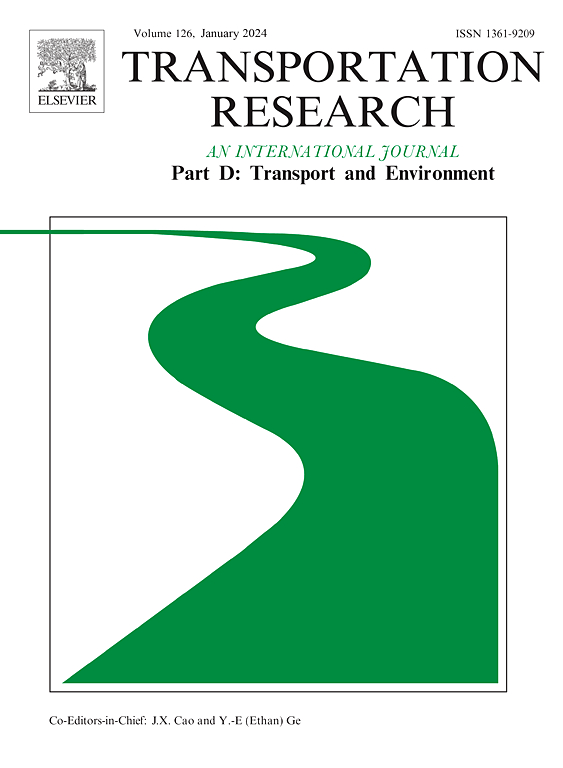Understanding electric vehicle charging network resilience: Resilience curves and interpretable machine learning
IF 7.3
1区 工程技术
Q1 ENVIRONMENTAL STUDIES
Transportation Research Part D-transport and Environment
Pub Date : 2025-03-21
DOI:10.1016/j.trd.2025.104709
引用次数: 0
Abstract
Understanding and enhancing the resilience of urban infrastructure, particularly electric vehicle (EV) charging networks becomes crucial as extreme weather events intensify. While extensive research exists on EV charging infrastructure planning, the resilience of charging networks under extreme weather remains largely unexplored. This study presents a comprehensive framework combining resilience curves with interpretable machine learning to assess and explain charging network resilience during extreme weather events. Utilizing data from 18,061 public charging piles during Typhoon Chaba in Shenzhen, China, we uncover significant spatial–temporal variability in network resilience. XGBoost modeling with SHAP analysis identifies charging station count, commercial land ratio, and raining as primary determinants of resilience patterns. The integration of traditional resilience assessment with modern data-driven analysis provides new insights into charging network dynamics, offering urban planners quantitative evidence and spatially-explicit strategies for developing climate-resilient charging infrastructure tailored to different urban contexts.
理解电动汽车充电网络弹性:弹性曲线和可解释的机器学习
随着极端天气事件的加剧,了解和增强城市基础设施的弹性,特别是电动汽车(EV)充电网络变得至关重要。尽管对电动汽车充电基础设施规划进行了广泛的研究,但极端天气下充电网络的弹性仍未得到充分探索。本研究提出了一个综合框架,将弹性曲线与可解释的机器学习相结合,以评估和解释极端天气事件期间的充电网络弹性。利用台风Chaba期间中国深圳18061个公共充电桩的数据,我们发现了网络弹性的显著时空变化。使用SHAP分析的XGBoost模型确定充电站数量、商业用地比例和降雨是弹性模式的主要决定因素。传统弹性评估与现代数据驱动分析的结合为充电网络动态提供了新的见解,为城市规划者提供了定量证据和空间明确的战略,以开发适合不同城市环境的气候弹性充电基础设施。
本文章由计算机程序翻译,如有差异,请以英文原文为准。
求助全文
约1分钟内获得全文
求助全文
来源期刊
CiteScore
14.40
自引率
9.20%
发文量
314
审稿时长
39 days
期刊介绍:
Transportation Research Part D: Transport and Environment focuses on original research exploring the environmental impacts of transportation, policy responses to these impacts, and their implications for transportation system design, planning, and management. The journal comprehensively covers the interaction between transportation and the environment, ranging from local effects on specific geographical areas to global implications such as natural resource depletion and atmospheric pollution.
We welcome research papers across all transportation modes, including maritime, air, and land transportation, assessing their environmental impacts broadly. Papers addressing both mobile aspects and transportation infrastructure are considered. The journal prioritizes empirical findings and policy responses of regulatory, planning, technical, or fiscal nature. Articles are policy-driven, accessible, and applicable to readers from diverse disciplines, emphasizing relevance and practicality. We encourage interdisciplinary submissions and welcome contributions from economically developing and advanced countries alike, reflecting our international orientation.

 求助内容:
求助内容: 应助结果提醒方式:
应助结果提醒方式:


